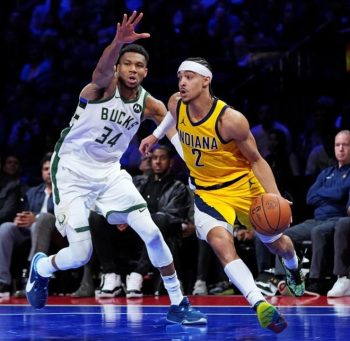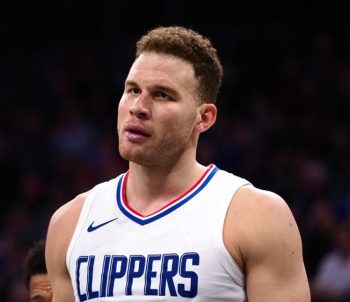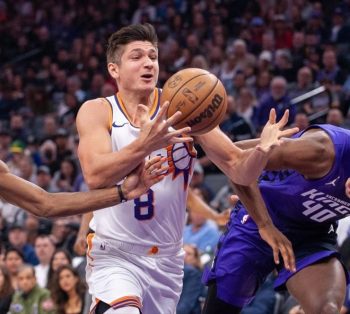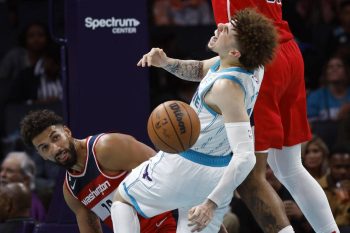NBA
NBA PM: What NBA Rule Should Be Changed?

Some Rules Need Changing
In what is a weekly Thursday feature, we ask three of our Basketball Insiders to weigh in on a common question. This week, we asked: What NBA Rule Needs To Be Changed?
Jump Shot Fouls
Kudos to the NBA introducing some innovative rule changes this summer that should speed up the pace of play and result in quicker games next season. While other leagues talk about improving their product and making it more fan-friendly, Adam Silver and the folks in the NBA’s New York offices actually step up and make it happen.
However, that doesn’t mean that the league shouldn’t continue to fine-tune and figure out other ways to improve their product.
One glaring issue that the NBA needs to address is the number of fouls called on players attempting jump shots. In particular, players who get awarded three free throws when they initiate contact and draw a foul while attempting three-pointers.
James Harden is far and away the biggest benefactor when it comes to exploiting the NBA’s outdated rules on what actions are deemed foul-worthy while in the act of shooting. During the 2016-17 regular season, according to Basketball-Reference, Harden drew a foul on a three-point attempt 124 times. That is a mind-boggling number. Harden had drawn 27 such fouls in 2014-15, and that number increased 46 in 2015-16. It’s not an issue limited solely to Harden in Houston; three-point fouls were up across the league last year. With Harden and others having now mastered this “skill,” it’s time for the NBA to make changes.
The problem is that defenders frequently get whistled for fouling a 3-point shooter, despite the fact they are actually playing solid defense. Harden, for instance, often initiates contact by latching onto a defenders hand or wrist as he begins his shot. In real time, the referee is often unable to determine who the guilty party is. Yet, because Harden’s ability to make the shot is diminished, and he has learned to sell the foul so well, he gets the benefit of the doubt. As a result, the defensive player is found guilty of committing a foul, despite being in perfectly sound defensive position. As if guarding the incredibly skilled Harden wasn’t difficult enough, defenders are essentially forced to keep their hands as far away from Harden as possible. This makes contesting shots extremely difficult.
The other way Harden and others, including Lou Williams, Kyle Lowry and Damian Lillard (to name just a few) often draw fouls from behind the arc is stopping short as defenders fight over a screen. Again, the defense is at a disadvantage despite exerting great effort to follow their coach’s orders to constantly pressure the ball handler.
Due to the current interpretation of the rules, offensive players have a huge advantage. It’s time for the NBA to crack down on some of these inequities, and give defenders a fair chance.
– Tommy Beer
Shortening The Post-Rebound Shot Clock
Beginning this season, the NBA has implemented new rules to improve the flow of games. Specifically, the NBA is looking at improving end of game situations when teams have previously opted to use multiple timeouts and commit intentional fouls in certain situations.
Some of the changes that were made included lowering the total number of timeouts a team may use to seven. In addition, “full” timeouts and “20-second” timeouts have been replaced by a standard 75-second team timeout. Teams will also be limited to how many timeouts they may use at the end of games.
As the league continues to look at speeding up the length of games, one rule they should consider looking at is shortening the shot clock following an offensive rebound. Currently, if a team records an offensive rebound or otherwise maintains possession of the ball after a missed shot, the shot clock resets to 24 seconds.
One suggestion that has been made to speed up possessions is to lower the shot clock to 14 seconds in these situations. Several basketball organizations across the globe have adopted this philosophy, including FIBA, the Euroleague and Eurocup. The WNBA followed the course and adopted this rule prior to the 2016 season.
In fact, this change was used last season in the G League. The NBA has used its development league for several years now to try out some different rule changes. With this shot clock suggestion, it could be a rule the NBA continues to try out in the G League with the idea of adding it to the NBA in the future.
Shortening the shot clock following offensive rebounds figures to add additional possessions to games and create more scoring opportunities. The NCAA has looked at this idea as well in an attempt to increase higher-scoring games. A change like this could even create more excitement during the final minutes of games when teams are attempting to mount a comeback.
While the league would certainly be motivated to implement this change to speed up games, some players are indifferent to the idea. One NBA player told Basketball Insiders he doesn’t think it would make that much of a difference, and he feels most shots following an offensive rebound are made within 10 seconds anyway.
Another player said he agrees with a possible change and that games would be much quicker, and feels as though the product on the floor would be better. He said a change like this would make positions more important, especially for good offensive teams. Players would be more inclined to box out and rebound better as well.
A third player from an overseas club told Basketball Insiders that he loves the rule and said it creates better pace during games. He joked that grabbing an offensive rebound with this rule gives him the best opportunity to shoot a quick three-pointer given the shorter shot clock.
As the league continues to look at ways to improve the game, this rule could be one that comes to life. A potential change like this one may not be implemented until the league conducts more research on the topic, but don’t be surprised to see this one sooner than later.
– Cody Taylor
Goaltending
There isn’t a whole lot to think about when it comes to changing current rules set in place in the NBA, but there is one tweak they could make down the road—goaltending.
When a player is looking for a chance to give his team life after a missed shot, that usually comes with a putback. It’s an exciting play that energizes the crowd and shifts momentum to the team that capitalizes on the second chance opportunity.
There is a bit of hesitation sometimes, though, because the league mandates the “invisible cylinder.” Putting it simply: Once the ball hits the rim, it must ricochet completely off the iron before any player can touch it. Because of this, players are often hit with the dreaded offensive interference call that results in a turnover. That’s a killer to the team who is punished.
So how do you fix this issue? Simple—adopt the International Basketball Federation’s way of doing things.
FIBA’s goaltending protocol is the exact same as the NBA’s regarding blocking a ball on a downward path, but aside from that, it’s basically a free-for-all. As soon as the ball touches the rim, it’s fair game. That means both players can do what they please with it—back taps, put backs, swats, you name it.
The adjustment would be noticeable, but not terribly difficult. International players can be found on nearly all 30 teams in the league, and the new ones coming in would have an even smoother transition than their predecessors.
Team USA dominated FIBA tournaments and the Olympics under these regulations. Big men would most definitely welcome the change because it would make their job less tactical and more active.
Just like it was in the years before the three-point wave came along, having a towering center or athletic power forward manning the paint could play a more crucial role than those outside threats on the perimeter.
The decisions referees make in a split second are difficult, especially having to make a judgment call with a non-existent barrier. By altering the rule, it makes their life easier as well. It’s a win-win situation for all parties involved.
If the NBA were to implement a new goaltending guideline, it would take some getting used to. It wouldn’t be a ridiculously drastic change, but it’d be something that could benefit teams in the long term.
– Spencer Davies
Every Thursday we’ll ask three of our guys to chime in on a common subject. If there is something you would like to see us address. Drop it to us on Twitter at @BBallInsiders using the hashtag #ConversationThursday.
More Twitter: Make sure you are following all of our guys on Twitter to ensure you are getting the very latest from our team: @stevekylerNBA, @MikeAScotto, @LangGreene, @EricPincus, @joelbrigham, @TommyBeer, @MokeHamilton , @jblancartenba, @Ben_Dowsett, @CodyTaylorNBA, @SpinDavies, @BuddyGrizzard, @JamesB_NBA, @DennisChambers_, and @Ben__Nadeau .











